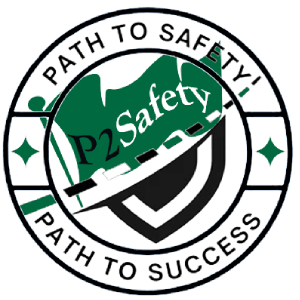CRST 50 Flashcards

1. Nanotechnology
Nanotechnology is the manipulation of matter on a near-atomic scale to produce new structures, materials and devices. The technology promises scientific advancement in many sectors such as medicine, consumer products, energy, materials and manufacturing.

2. What are the 7 principles of auditing?
The basic principles of auditing are confidentiality, integrity, objectivity, independence, skills and competence, work performed by others, documentation, planning, audit evidence, accounting system and internal control, and audit reporting.

3. What Are the 5 C's of Internal Audit?
Internal audit reports often outline the criteria, condition, cause, consequence, and corrective action.

4. A 5S audit
A 5S audit app is a tool used by teams of workers across various industries such as manufacturing, hospitality, and logistics to evaluate their adherence to the 5S principles: Seiri (Sort), Seiton (Systematize), Seiso (Shine), Seiketsu (Standardize), and Shitsuke (Sustain).

5. How many principles of auditing are there?
7 audit principles: For reliable audits, there are 7 audit principles that an auditor should adhere to, set out by ISO 19011:2018 Guidelines for Auditing Management Systems.
1. Integrity
The foundation of professionalism.
2. Fair Presentation: The obligation to report truthfully and accurately.
3. Due Professional Care: The application of diligence and judgment in auditing
.
4. Confidentiality: Security of information.
5. Independence: The basis for the impartiality of the audit and objectivity of the audit conclusions.
6. Evidence-based approach: The rational method for reaching reliable and reproducible audit conclusions in a systematic audit process.
7. Risk-based approach: An audit approach that considers risks and opportunities.

6. Checklists
A checklist helps to clarify inspection responsibilities, controls inspection activities and provides a report of inspection activities. Checklists help with on-the-spot recording of findings and comments but be careful. Do not allow the inspection team to become so intent on noting the details listed in the checklist that it misses other hazardous conditions. Use checklists only as a basic tool. Refer to the related documents for sample checklists that you can use as a guide to develop a checklist that is customized for your workplace.

7. Periodic inspections
Periodic inspections are regular, planned inspections of the critical components of equipment or systems that have a high potential for causing serious injury or illness, or are necessary for emergency response. The inspections are often part of preventive maintenance procedures or hazard control programs. Laws and regulations may specify that qualified or competent persons must inspect certain types of equipment, such as elevators, boilers, pressure vessels, hoists and cranes, scaffolding, transport docks, warehouse racking, vehicles, fire suppression systems and fire extinguishers at determined points in the work process and at regular intervals (e.g., monthly, quarterly, annually).

8. Incident Investigations
An incident investigation is the account and analysis of an incident based on information gathered by a thorough examination of all contributing factors and causes involved. It is widely accepted that incidents occur as a result of a chain of events.

9. Elements of an Incident Investigation
Elements of an incident investigation include: preparation, on-site investigation and development of a report, with recommendations for prevention. Provide training to investigators, including management, workers, safety committee members and union representatives.

10. Statistics Mean
In statistics, the mean is one of the measures of central tendency, apart from the mode and median. Mean is nothing but the average of the given set of values. It denotes the equal distribution of values for a given data set. The mean, median and mode are the three commonly used measures of central tendency.

11. Percentages
One of the most frequent ways to represent statistics is by percentage. Percent simply means "per hundred" and the symbol used to express percentage is %. One percent (or 1%) is one hundredth of the total or whole and is therefore calculated by dividing the total or whole number by 100.

12. A Standard Deviation (or σ)
A standard deviation (or σ) is a measure of how dispersed the data is in relation to the mean. Low standard deviation means data are clustered around the mean, and high standard deviation indicates data are more spread out.

13. Time Weighted Average
A time-weighted average is equal to the sum of the portion of each time period (as a decimal, such as 0.25 hour) multiplied by the levels of the substance or agent during the time period divided by the hours in the workday (usually 8 hours).

14. What Is the Mode?
The mode is the value that appears most frequently in a data set. A set of data may have one mode, more than one mode, or no mode at all. Other popular measures of central tendency include the mean, or the average of a set, and the median, the middle value in a set.

15. A Job Safety Analysis (JSA)
A job safety analysis (JSA) is a procedure which helps integrate accepted safety and health principles and practices into a particular task or job operation. In a JSA, each basic step of the job is to identify potential hazards and to recommend the safest way to do the job.

16. Task Analyses
Task analysis is a fundamental tool of human factors engineering. It entails analyzing how a task is accomplished, including a detailed description of both manual and mental activities, task and element durations, task frequency, task allocation, task complexity, environmental conditions, necessary clothing and equipment, and any other unique factors involved in or required for one or more people to perform a given task.

17. A Process Flow Analyses.
A process flow is a way to visualize each subsequent step that your team goes through when working toward a goal. By visualizing these steps in a diagram or flowchart, everyone can easily understand what order they have to complete tasks. Improving processes is critical for getting higher-impact work done, faster.

18. What is the meaning of safety in design?
Safety in Design is a process that integrates hazard identification and risk assessment methods early in the design. The process considers how to eliminate, isolate or minimize the risks of death, injury and ill health to those who construct, operate, maintain, decommission or demolish an asset. Safe design applies to every stage in the life cycle from conception through to disposal. It involves eliminating hazards or minimizing risks as early in the life cycle as possible. The consistent application of hazard identification, risk assessment and risk control processes is required to achieve safe design.

19. WHMIS
The Workplace Hazardous Materials Information System (WHMIS) is Canada's national hazard communication standard. The key elements of the system are hazard classification, cautionary labelling of containers, the provision of safety data sheets (SDSs) and worker education and training programs.

20. GHS
Globally Harmonized System (GHS) for Classification and Labeling of Chemicals. The Globally Harmonized System (GHS) is an international approach to hazard communication, providing agreed criteria for classification of chemical hazards, and a standardized approach to label elements and safety data sheets.

21. Point of operations
The point of operation is where work is performed on the material, such as cutting, shaping, boring, or forming of stock. The power transmission apparatus is all components of the mechanical system which transmit energy to the part of the machine performing the work. Point of operations means that point at which cutting, shaping, boring, or forming is accomplished upon the stock. The power transmission device refers to all parts of a mechanical system that transmit energy to the part of the machine performing the work. That's the point of operation, which is where work is performed on the material, such as shaping, cutting, boring, drilling, etc.

22. What does a light curtain do?
The simplest function of a light curtain is when light beams are obstructed and the outputs turn off, which signals a stop to the associated hazardous movement(s). If no incident has occurred and the area is safe, a reset can be performed.

23. An interlock
An interlock is a feature that makes the state of two mechanisms or functions mutually dependent. It may be used to prevent undesired states in a finite-state machine, and may consist of any electrical, electronic, or mechanical devices or systems

24. Personal protective equipment.
Personal protective equipment is protective clothing, helmets, goggles, or other garments or equipment designed to protect the wearer's body from injury or infection. The hazards addressed by protective equipment include physical, electrical, heat, chemicals, biohazards, and airborne particulate matter.

25. Biomechanics
Biomechanics is the study of the physical structure of living organisms. As related to workplace ergonomics, the human body is viewed as a system of levers. At the simplest level, by knowing the weight of a held object and the distance from a joint, the load on that joint can easily be calculated.

26. What is anatomy ergonomics?
Ergonomics: The science of making things fit people. Ergonomics uses knowledge from the fields of anatomy, mechanics, physiology, and psychology to utilize human energy most effectively. Something that is ergonomic is designed for safe, comfortable, and efficient use.

27. What is physiological ergonomics?
Two basic areas of ergonomics can be distinguished: physiological ergonomics, which deals with the design and adaptation of work environments, and cognitive ergonomics, which considers the mental processes such as perception, attention and information processing.

28. What is physiological ergonomics?
Two basic areas of ergonomics can be distinguished: physiological ergonomics, which deals with the design and adaptation of work environments, and cognitive ergonomics, which considers the mental processes such as perception, attention and information processing.

29. Musculoskeletal Disorders (MSDs)
Musculoskeletal Disorders (MSDs) are a group of painful disorders of muscles, tendons, and nerves. Injuries can result from overuse and develop over time. Work activities which are frequent and repetitive, or activities with awkward postures cause these disorders which may be painful during work or at rest.

30. Office Ergonomics Checklist
Posture – Activity – Exercise. Maintain proper posture, paying careful attention to positioning of head, neck/spine, arms/wrists, hips/thighs and feet. ...
Lighting – Air – Noise. Maintain appropriate light levels for specific tasks. ...
Work Style – Organization – Breaks.

31. The "Quick Fix"
The "Quick Fix" may be used for a job if employees have experienced no more than one MSD incident in that job and there have been no more than two MSD incidents in the employer's entire establishment during the last 18 months. If eligible for the "Quick Fix", the employer must act quickly to identify the likely causes of the MSD and develop measures to reduce exposure using where necessary a health care professional or temporary work restrictions together with work restriction protection

32. The CSA Standard Z412-17 Office ergonomics
The CSA Standard Z412-17 Office ergonomics – An application standard for workplace ergonomics recommends that alternating between sitting and standing, or variations on sitting and standing postures (e.g., reclining, forward tilting, and semi-standing) are encouraged in order to avoid the negative effects of prolonged.

33. What is the role of ergonomics in design?
Ergonomics is designing a job to fit the worker so the work is safer and more efficient. Implementing ergonomic solutions can make employees more comfortable and increase productivity. Why is ergonomics important?

34. The role of an ergonomist
Ergonomists ensure that the design of products, tasks, and work methods is compatible with human performance. They evaluate human and machine systems by observing, measuring, and grading how people interact with each other and their equipment and workspaces. They do this to maximize safety, efficiency, and well-being.

35. National Fire Prevention Association
The National Fire Protection Association is a U.S. based international nonprofit organization devoted to eliminating death, injury, property and economic loss due to fire, electrical and related hazards.

36. Underwriters Laboratory
The UL enterprise is a global safety science company headquartered in Northbrook, Illinois, composed of three organizations, UL Research Institutes, UL Standards & Engagement and UL Solutions.

37. Factory Mutual
FM Global is an American mutual insurance company based in Johnston, Rhode Island, United States, with offices worldwide, that specializes in loss prevention services primarily to large corporations throughout the world in the Highly Protected Risk property insurance market sector.

38. Canadian Standards Association,
The CSA Group is a standards organization which develops standards in 57 areas. CSA publishes standards in print and electronic form, and provides training and advisory services. CSA is composed of representatives from industry, government, and consumer groups.

39. European Union
The European Union is a unique partnership between 27 European countries, known as Member States, or EU countries. Together they cover much of the European continent. The EU is home to around 447 million people, which is around 6 % of the world's population. Citizens of the EU countries are also EU citizens.

40. The National Building Code of Canada (NBC)
The National Building Code of Canada (NBC) 2020, developed by the Canadian Commission on Building and Fire Codes and published by the National Research Council of Canada, sets out technical requirements for the design and construction of new buildings, as well as the alteration, change of use and demolition of existing

41. The National Fire Code of Canada (NFC)
The National Fire Code of Canada (NFC) 2020, developed by the Canadian Commission on Building and Fire Codes and published by the National Research Council of Canada, sets out technical requirements for: • activities related to the construction, use or demolition of buildings and facilities • the condition of specific elements of buildings and facilities • the design or construction of specific elements of facilities related to certain hazards

42. Heat Transfer
Heat tends to flow from a hot substance to a cold substance. The colder of two bodies in contact will absorb heat until both objects are at the same temperature. Heat can travel throughout a burning building by three methods: conduction, convection and radiation.

43. Combustion
Fire is a by-product of a rapid combustion reaction. Combustion is the self-sustaining process of rapid oxidation of a fuel, which produces heat and light.

44. Backdraft
Backdraft occurs if improper ventilation allows additional oxygen to be presented during the Steady-State Burning Phase or Hot Smoldering Phase, causing an increase in combustion. This scenario is the most hazardous condition a Firefighter can face.

45. Classification of Fires
A) Class A fires involve wood, cloth, paper, rubber and many plastics. These fires can typically be put out with water or foam.
B) Class B fires involve flammable and combustible liquids, and/or gases such as gasoline, paint, alcohol and related substances. These fires are best managed by smothering the flames to remove the oxygen source or by removing the fuel source.
C) Class C fires involve live electrical equipment. The safest approach is to unplug or otherwise de-energize the source of the fire and treat it as Class A or B depending on what is burning.
D) Class D fires involve combustible metals and must be extinguished using specialized fire control agents.

46. The fire triangle or combustion triangle
Oxygen, heat, and fuel are frequently referred to as the "fire triangle." Add in the fourth element, the chemical reaction, and you actually have a fire "tetrahedron." The important thing to remember is: take any of these four things away, and you will not have a fire or the fire will be extinguished.

47. What are the basics of fire?
Oxygen, heat, and fuel are frequently referred to as the "fire triangle." Add in the fourth element, the chemical reaction, and you actually have a fire "tetrahedron." The important thing to remember is: take any of these four things away, and you will not have a fire or the fire will be extinguished.

48. What are the 4 types of fire extinguishers?
There are four classes of fire extinguishers – A, B, C and D – and each class can put out a different type of fire. Class A extinguishers will put out fires in ordinary combustibles including wood, cloth, rubber, paper, as well as many plastic materials.

49. What is the Color code of fire extinguisher?
Red – Water (both spray and mist) Blue – Dry powder. Cream – Foam. Black – Carbon dioxide (CO2)

50. Workplace Health Promotion (WHP)
Workplace Health Promotion (WHP) is the combined efforts of employers, employees and society to improve the health and well-being of people at work. This can be achieved through a combination of: improving the work organisation and the working environment promoting active participation encouraging personal development.




